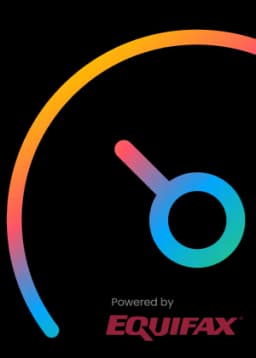Budgeting for groceries is essential for individuals and families to effectively manage their expenses and allocate their financial resources wisely. Groceries are a big part of our monthly spending, and having a well-planned budget helps to control costs, reduce waste, and ensure that one's nutritional needs are met without overspending.
Recently, we shared with you various tips on saving money while grocery shopping, and one of those ways to create a grocery budget for yourself. Today, we’re going to expand on the latter and give you a few winning strategies for effectively creating, and sticking to, a grocery budget that will help you save money in the long run.
Before You Create Your Canadian Grocery Budget
Grocery budgeting in Canada is possible but presents unique challenges influenced by factors like regional price variations, climate, and economic conditions. Canada's diverse geography impacts the availability and cost of certain food items across different provinces and territories. Also, the fluctuation in food prices due to seasonality and external factors means you will need to take a dynamic approach to budgeting. Understanding that is crucial for Canadians to create realistic and effective grocery budgets that align with their circumstances.
Tips for Effectively Creating a Grocery Budget
Now that you understand some of the nuances to consider when designing a grocery budget, it’s time to get into it. Practical tips on smart shopping habits, meal planning, and leveraging discounts will be discussed to aid in effective budget execution. So let’s dive in!
Understand Your Financial Situation
Before creating a grocery budget, it's important to understand your overall financial situation. Start by evaluating your sources of income, including salaries, freelance work, investments, or any other streams of revenue. Subtract all your monthly expenses, like rent or mortgage payments, utilities, insurance, transportation, debt repayments, and other essential living costs. This may be the more tedious part of creating your budget, but this analysis is important and will provide you with a clear picture of your disposable income available for groceries.
Once you’ve done that, identify how much you can comfortably allocate towards groceries without hurting your overall budget. A reasonable portion of your disposable income should be dedicated to groceries, ensuring it meets your nutritional needs and your financial objectives.
Determine Realistic Grocery Budget Goals
Begin by setting both short-term and long-term goals. Short-term goals can be weekly or monthly, aiming to keep your spending within a limit during time time. A long-term goal may require saving money for several months or a year. Having these goals will motivate you to stick to your budget consistently.
Allocate a specific budget for various food categories like fruits, vegetables, proteins, dairy, grains, snacks, and non-food items like cleaning supplies, toilet paper, etc. Understanding your dietary needs will help you distribute your budget appropriately. This will ensure you still have a balanced and nutritious diet while staying within your financial limit.
Don’t forget to consider occasions or events that might require extra groceries, like birthdays, holidays, or gatherings. If you need to, allocate a separate portion of your budget for these special purchases so they don't derail your regular spending plan.
Track Your Current Grocery Expenses
Before you start creating a budget, it's vital to understand your current spending habits. Start by meticulously tracking all your grocery expenses for a specific period, such as a month. Make a note of every purchase, even small ones. This will give you a clear insight into your current spending patterns and help identify areas for potential savings.
After that, categorize them into groups like fruits and vegetables, meat, dairy, etc. This will help you look at the proportion of your spending in each category, showing you where most of your funds are allocated. It might also uncover any unexpected patterns or overspending in certain areas.
Begin Creating Your Grocery Budget
If you’ve followed all the steps above, you’re ready to create your grocery budget. Start by keeping the following in mind:
Prioritize essentials: fresh produce, grains, lean proteins, and dairy.
Make these foundational elements a major part of your budget.
Reduce portions for non-essential or discretionary items like snacks and beverages.
Keep in mind that the cost of certain groceries may fluctuate throughout the year due to seasonal changes. During harvest seasons, fresh produce might be more abundant and less expensive. Take advantage of these fluctuations and adjust your budget to optimize your spending. Also, always look for sales, promotions, and discounts, which will allow you to save on essential and non-essential items.
You’ll also have to try and be flexible. Unexpected expenses, changes in family size, or variations in income are just some reasons you’ll have to potentially make adjustments to your budget. Allow for some flexibility within your budget to accommodate unforeseen circumstances while still sticking to the overall budget as much as you can. Being adaptable ensures that your budget remains sustainable in the long run.
Explore Meal Planning and Bulk Buying
Meal planning and bulk buying can be a great part of your budget planning process. Take some time each week to plan your meals and create a shopping list. Consider what you already have in your pantry or fridge to minimize buying more than you need. Planning meals not only helps in reducing food waste but also prevents impulse purchases.
Next, if you can, buying in bulk can be a cost-effective strategy, especially for non-perishable items like grains, pasta, canned goods, and household supplies. The per-unit cost is usually lower when purchasing larger quantities. But before you take this route, make sure you have sufficient storage and that the items won't expire before you can use them. Consider joining a wholesale club like Costco if it aligns with your needs and budget.
Take Advantage of Coupons, Discounts, and Loyalty Programs
You probably have a smartphone! So, if you do, many grocery stores offer digital coupons on their websites or mobile apps. Check for discounts on items you regularly purchase and load them to your digital loyalty card or account. These discounts should be automatically applied at checkout when you purchase the respective items. Paper coupons aren’t as common anymore, but they still exist in some newspapers, magazines, or at the store's entrance, so be sure to check for those.
You’ll also want to check and see if your local grocery store has a loyalty program. Sign up for these programs to earn points or receive special discounts on selected items. Accumulate points and redeem them for discounts on future purchases.
Need Help With Grocery Bills? Try iCash!
Sometimes, you just need a little extra financial boost to help you cover the cost of groceries. If you need a quick e-Transfer payday loan, try one from iCash. Our application process is quick, and once you’re approved, that e-Transfer will be in your account in 2 minutes. It’s that easy!












